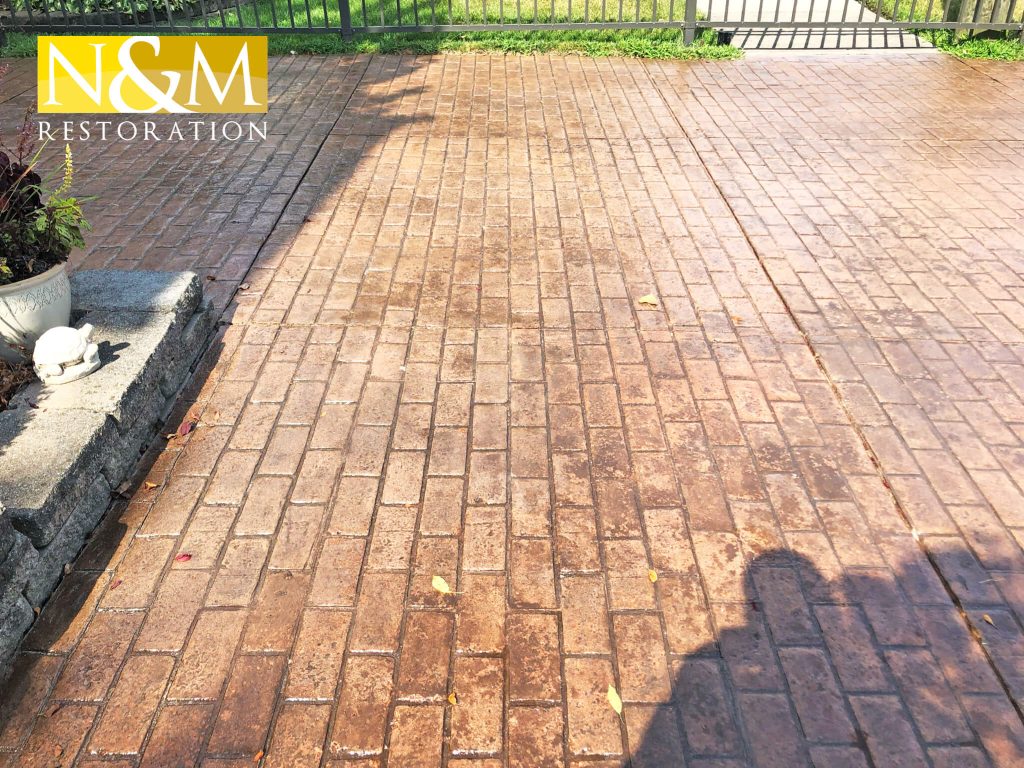IS STAMPED CONCRETE SLIPPERY?
Many stamped concrete applications look slippery because of the glossy sealant on top. This is designed to bring out the colors of the concrete, but it can also make the concrete look “wet” when it isn’t. Many homeowners are shifting to matte finishes to make their concrete look more like natural stone.
Stamped concrete can be slippery, but it is not inherently slick. The stamping pattern, installation techniques and sealants used on the concrete play a big role in its slipperiness. At N&M Restoration, we take extra precautions to prevent stamped concrete from getting too slick.
HOW TO MAKE IT LESS SLIPPERY
The best way to create slip-resistant concrete is through skid-resistant additives in the sealer. This provides a grip that a glossy sealer wouldn’t naturally have. Most of these additives are invisible and will not impact the appearance of the concrete.
Another way to make your concrete less slick is to have a cover over the patio. This is a logical addition to most patio designs because it provides shade in the summer and coverage in the rain. If you have a large patio with a cover on it, you could still use your fire pit, grill, etc. even if it’s raining outside.
Finally, make sure you do not over-seal. Not only will this add to the slickness, but it could also create a milky film over the top. Our experts can help you decide when to seal your concrete.
ALTERNATIVES YOU MAY WANT TO CONSIDER
If you’re still not sure stamped concrete is right for your patio, consider these slip-resistant alternatives:
- Brick pavers that allow water to flow into the sandy grout lines
- Exposed aggregate concrete that exposes the stone and particles within the concrete structure
- Natural stone that can absorb rain and water, such as limestone
- Concrete pavers with strategic drainage channels below
- Gravel that offers grit even when it’s wet (not ideal if you need a level surface)
N&M Restoration can help you find the best hardscaping design for your patio. Give us a call at (248) 924-9798 to learn more about stamped concrete, exposed aggregate concrete, brick paving, and other patio materials.





